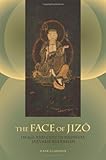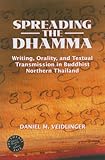Support H-Net | Buy Books Here | Help Support the NBN and NBN en Español on Patreon | Visit New Books Network en Español!
- African Studies
- African American Studies
- American Politics
- American Studies
- American South
- American West
- Asian American Studies
- Australian and New Zealand Studies
- British Studies
- Canadian Studies
- Caribbean Studies
- Central Asian Studies
- Chinese Studies
- East Asian Studies
- Eastern European Studies
- European Politics
- French Studies
- German Studies
- Iberian Studies
- India Studies
- Indian Ocean World
- Iranian Studies
- Irish Studies
- Israel Studies
- Italian Studies
- Japanese Studies
- Korean Studies
- Latino Studies
- Latin American Studies
- Mexican Studies
- Middle Eastern Studies
- Native American Studies
- Pacific Studies
- Polish Studies
- Russian and Eurasian Studies
- Southeast Asian Studies
- South Asian Studies
- Turkish Studies
- Ukrainian Studies
- Western European Studies
- World Affairs
- Animal Studies
- Anthropology
- Archaeology
- Business, Management, and Marketing
- Media
- Critical Theory
- Disability Studies
- Drugs, Addiction and Recovery
- Education
- Economics
- Finance
- Geography
- Gender Studies
- Genocide Studies
- Higher Education
- Human Rights
- Journalism
- Language
- Law
- LGBTQ+ Studies
- National Security
- Philanthropy
- Philosophy
- Policing, Incarceration, and Reform
- Political Science
- Politics & Polemics
- Public Policy
- Sex, Sexuality, and Sex Work
- Sociology
- Sound Studies
- Sports
- Urban Studies
- Big Ideas
- Celebration Studies
- Co-Authored
- Cover Story
- Historical Materialism
- History Ex Silo
- Interpretive Political and Social Science
- Invested Investor
- Landscape Architecture
- Late Antiquity
- Mormonism
- NBN Book of the Day
- NBN Seminar
- Postscript: Conversations on Politics and Political Science
- Practical History
- Preparing for Life After Grad School
- Psychology and Climate Change
- Syriac Studies
- The Chair: In The Room at the Fed
- New Books with Miranda Melcher

Jun 20, 2011
Hokkeji and the Reemergence of Female Monastic Orders in Premodern Japan
Summary
Scholars have long been fascinated by the Kamakura era (1185-1333) of Japanese history, a period that saw the emergence of many distinctively Japanese forms of Buddhism. And while a lot of this attention overshadows other equally important periods of Japanese Buddhist history, there is still much to be learned. Take the Buddhist convent known as Hokkeji, located in the old capitol of Nara. Founded in the eighth century, the complex fell into decline and was all but forgotten for centuries before reemerging in the Kamakura period as an important pilgrimage site and as the location of a reestablished monastic order for women.
This is the subject of Lori Meeks' wonderful new book, Hokkeji and the Reemergence of Female Monastic Orders in Premodern Japan (University of Hawaii Press, 2010). Prof. Meeks questions some of the assumptions and biases of previous scholarship on women in Japanese Buddhism and explores the multivalent ways that Buddhist women were able to assert their autonomy and agency in what is presumed to be an androcentric, patriarchal Japanese Buddhist establishment.
Mentioned in the interview (and in the epilogue of her book) is another Buddhist text called the Ketsubonky or the Blood Bowl Sutra. You can learn more about this and Prof. Meeks' future work on this subject from the Institute of Buddhist Studies podcast.





































































































